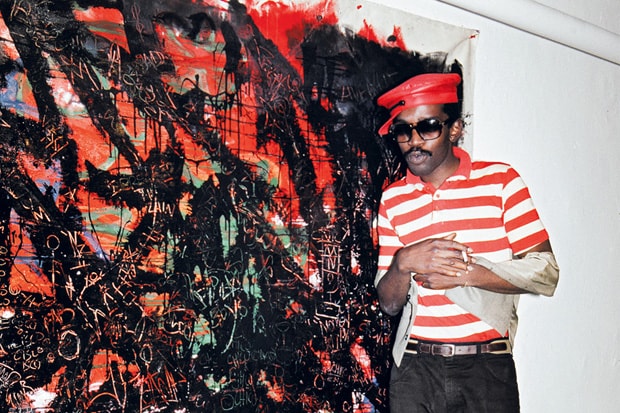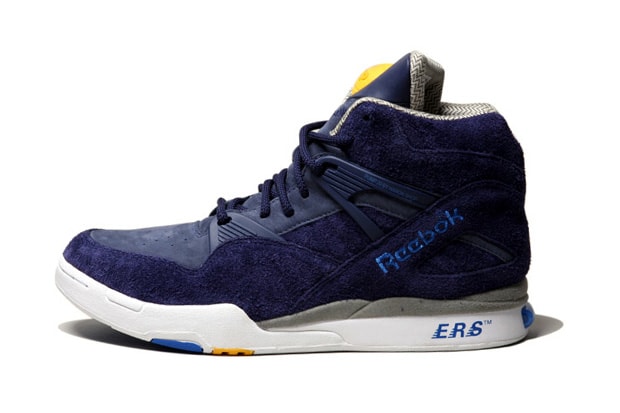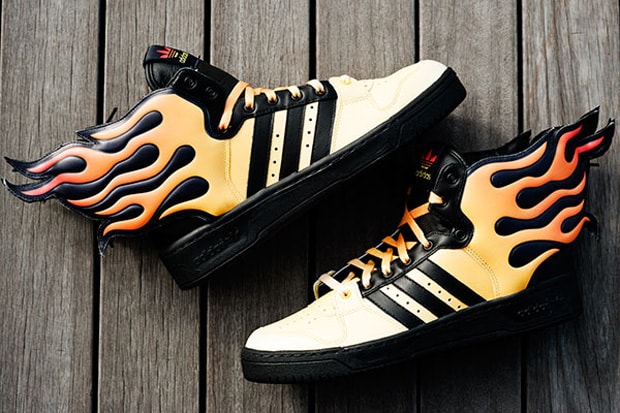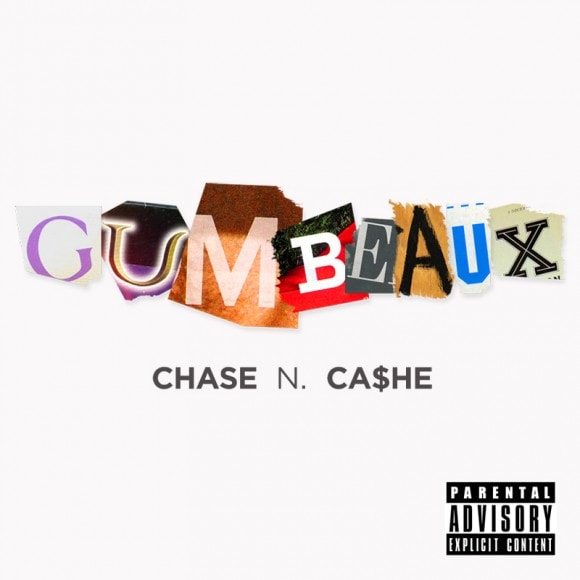Print 2.0: Redefining the Craft
I don’t remember when was the last time I went out and purchased a physical magazine. A media
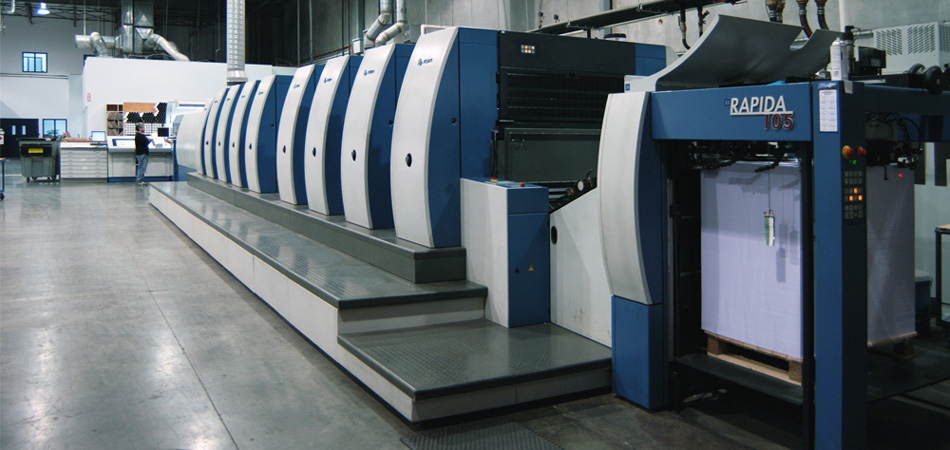
I don’t remember when was the last time I went out and purchased a physical magazine. A media platform that has come to represent so many different important facets of culture, discourse and life has steadily moved itself towards a new approach and angle over the last few years. Undoubtedly its arch-nemesis and a major contributor to its downfall has been the abundance of free and readily available information as disseminated by the Internet.
But we can all play nicely can’t we? It seems true as we’ve seen a great deal of independent, niche magazines that certainly serve a particular slice of the market very well. With the ability to intersect digitally, that was the premise of this particular feature and one that was of great interest for some time. Since the highly publicized death of many print magazines over several industries in the last few years. I’ve always felt that in any particular scenario, one in which there was friction with progression, some of the answers need not lie solely in the present and future.
As much as HYPEBEAST exists almost entirely online in an intangible format, I’m far from oblivious to what advantage our print relatives have through paper and printing. They are arguably still placed at the top of the media pyramid in the realm of fashion. Perhaps this comes down to the barriers of entry for print and the subsequent need for much higher quality for subsistence… It is free to sign up for a Tumblr or a Wordpress eh? Despite the fact that yes major publications are packing it in, there have been both upstart magazines and their well-established forefathers who have sought to untangle the current printed media mess, some with greater achievement than others.
I can’t help but think this riddle of how to properly incorporate analog and digital is really not as difficult as it seems. Yet those residing almost entirely in an old school way of publication and communication are inevitably being left in the dust as they fail to properly integrate into a landscape that embodies the best of both worlds.
As the iPad pushed the agenda for digital magazine consumption, initial numbers were perhaps unsurprisingly low. The adoption rate is still far from major media platforms like your smartphone or your television in your living room. Even then the first run of “digital magazines” have been unspectacular as we still haven’t seen programming and coding up to its true potential. But the likes of Rupert Murdoch and his The Daily as well as Richard Branson’s PROJECT are leading the way with “made for” iPad magazines. But I can’t help but think tablet magazines as being one for the very deep pockets when it comes to their production, not everybody has that ability. Also, it doesn’t help when only 0.3% of the global population is apparently in possession of a tablet with a further operating system fragmentation which in itself will bring a further round of headaches. We had thought that Apple was about to throw publishers a lifeline with their new subscription service, but a 30% rake for the service is surely not going to help in the promotion and support of true made for tablet magazines.
But having talked down the chances of tablet magazines, I still think there is simply enough room to play for all relevant parties. While the business model is yet to exist (let’s face it, newspapers seem to be at their wits end to figure this one out as well), innovation still needs to find a way to push forward as to not stifle the potential creative platform that can once again bridge together both analog and digital worlds.
To help get a better understanding of what sort of beliefs and philosophies various young and established magazines embody, I sought out the insights of Clark Magazine’s Romain Dauriac, Inventory’s Ryan Willms, Green Soccer Journal’s Adam Towle, HIDDEN CHAMPION’s Hidenori Matsuoka and Tenue de Nîmes’ Menno van Meurs. Some refreshing answers to provide more than a glimmer of hope onto a largely bleak industry or so you’d think. It would have been nice to get the input from some large established publications with less independent ties, but unfortunately we weren’t able to have anybody speak on the record.
Interview: Eugene Kan
Introduction Photography: Chris Allen

Interview with Romain Dauriac
Editor-in-Chief of Clark Magazine
www.clarkmagazine.com
How have you thought about how re-inventing your magazine for a new and more competitive media landscape?
No I don’t think ‘re-inventing’ is the proper term. Clark has invented and created its own content for over ten years by searching out what doesn’t exist on the net or in other traditional medias like TV and radio etc. Actually, I think that the question arose 5-6 years ago, but we soon realized that Clark didn’t depend on specific current events, politics or products. The challenge of a magazine nowadays is not to inform, but to sort, to show a certain state of mind. So no, re-inventing is not the way I would put it, with every issue of Clark we are not out to re-invent a new magazine, but re-organizing yes. We put less products, our agenda takes up less space… For this year’s 10 years issue, we’ve given carte blanche to 10 different artists and graphic designers. It was quite a challenge!
Do current magazines with established pedigree need to diversify their business and move outside into other revenue streams besides just ads?
A magazine with established pedigree is a magazine that exists for a long time supported by his readers, so it already works financially. It doesn’t need to diversify its activities. I think magazines aren’t brands. They should be considered media and they should continue along this path. Clark will always be confronted with magazines that only automatically promote themselves without caring about their content. The problem is that they use Internet to create a fuss around their magazine that eventually people don’t even buy nor read. Internet has permitted these so called magazines to have a virtual success, by organizing events, releasing collaborations… to make up for the readers they don’t have. I think today there are so many magazines’ that look good: they have an appealing cover and hired a great artistic director to do a minimalistic lay-out, but while turning the pages, you notice the content sucks. But in the end it’s just the brands that get caught, not the readers, by buying publicity space. Just take a look at the best magazines and you’ll notice they don’t need all that self-promotion. The readers are the ones that build a magazine, not promoting or publicity. On the other hand, I think we should raise the price of the mag! An internet connection cost about €45 EUR a month and you’ll find yourself lost in a stream of mass information, while Clark costs about €6 EUR every two months and guides you through this stream with a fine selection of actual creation.
How do you plan to align yourself with the Internet?
We made a website that shows a weekly updated agenda and we sell the magazine online as well. It’s a question we could easily inverse. Why don’t blogs for example align with paper? Take a look at the magazine New Order or the Sartorialist? I think blogs are becoming too commercial and they need paper to find their liberty again and to immortalize themselves on something more sustainable than HTML. It’s possible that a lot of blogs become magazines in the future. But it must be said that, Clark has never been this much read since its incorporation with blogs and their big ‘influence’.
The iPad and other digital tablets were slated to be a saving grace for print magazine, but initial numbers have not been up to par. What really is the future of magazines?
The habits will change that’s for sure. But we’re still far from a revolution of a completely different platform. The iPad is another gadget for the masses for the moment, and they will continue inventing more developed technologies. But there’s something special with paper. It’s been part of human culture for such a long time. I think people have a certain romantic feeling about it. That’s what I have at least. I think it’s the same reason why certain people are still using film and analog photography. Lomography is so big right now, even if new and better digital cameras are brought on the market every day!
Does your environmental footprint factor into the printing and paper you choose?
Yes. We use recycled paper.
What do magazines possess that their newer age digital media brethren can’t replicate?
It’s a different medium, more sustained than the information distributed on the web. We all know that we don’t give the same attention when we’re surfing than when we’re reading a newspaper or a magazine. Everything goes fast on the web but a good magazine is made to spend time with it. It has a human touch to it. I go crazy sometimes sitting in front of my computer all day. A good magazine or a good book is the perfect escape. Also Clark is an art magazine and we show a lot of artist’s portfolios. Even if it’s not the same as seeing a painting in real life, I think paper is a better substitute than a computer screen.
What strengths do digital platforms possess over analog ones such as magazines?
Digital platforms are the fastest way to spread information. Unfortunately this also means that a lot of false information or rumors are diffused. That could be dangerous…
Do you feel there’s an air of respectability that magazines have over digital mediums?
Of course. There’s something noble about paper today. Maybe it’s a bit old school to say this, but I believe that working with paper is dealing with certain values and respect that the readers and the people working in the magazine environment have towards each other. I also think it’s more reassuring than the web. Internet carries such a freedom, everyone can call himself a journalist on Internet while it’s much harder to be considered a respectable journalist working in the press. Also the authenticity of a magazine creates a certain respect. On the internet there’s so much copy/pasting from one blog to another. Even if in Clark we try to show new artists, it’s not a race against other magazines to be the first to publish something. I prefer to write an interesting article than to be the first one to have spoken about it. It’s just a matter of singularity.
Why do you think marketers and still place a lot of respect and weight in print despite online numbers being potentially stronger?
The marketers don’t have enough confidence in the web because it’s like a jungle. They haven’t found the right tools to control it. I find publicity on the net with all its pop-ups, very aggressive. It’s like we’ve built a habit to avoid ads when we’re surfing. Also users have complete control of how they navigate, they can go in every direction. That’s what readers can’t do with a magazine. A magazine has a certain structure that you can’t change or control yourself. Paper offers a guarantee. A guarantee for the readers in terms of content, and for the brands in terms of visibility.
Photography: Emilie Moysson
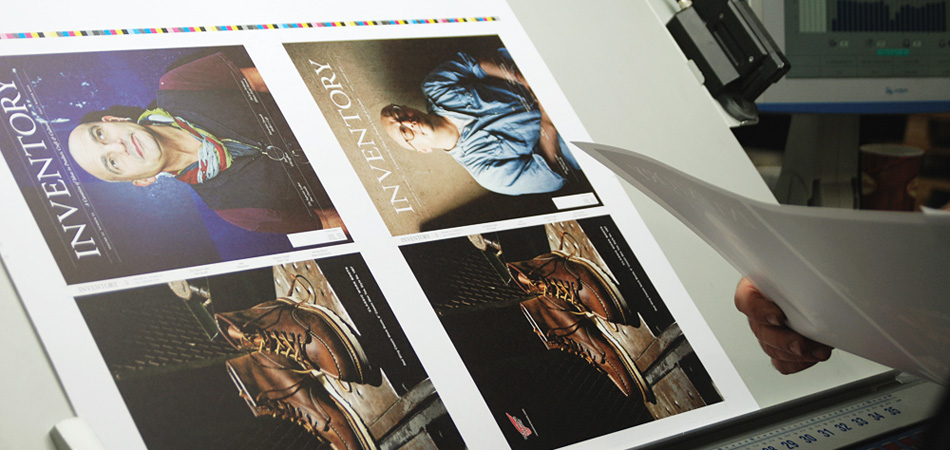
Interview with Ryan Willms
Creative Director of Inventory Magazine
www.inventorymagazine.com
In a time when print publications were and still are shutting down in droves, what was your reasoning for starting a magazine?
For us, it was really the content we were producing online that pushed us to start printing a magazine. The people we were interviewing, their stories and the quality of photography really felt like it deserved to be printed. There is a certain amount of editing, curation and attention to execution that I feel print requires. You can’t log in and edit it tomorrow, so by the time you hit the print button, that article, or issue is the best it can be at that time. Also, it was easy to see that everyone at their best friend were starting their own blog, so we always wanted to push ourselves ahead to try to create something more special. Considering each font, the weight and texture of the paper, the color of red we were going to use – we tried to consider everything. Although there is definitely a natural development, like online, the steps are permanent and I think that just drives you to try that much harder to get it right.
Was it relatively easy to get started?
By the time we made the decision, I think it was fairly easy. We had an audience that we’d gained through our website, and they had told us they would pay for the content we were making if it was printed. From there, it was really just getting enough money together so that we could afford to print it. We didn’t pay ourselves anything, and still hardly do as Inventory is 100% independent. I’m definitely not saying it is easy to make each issue, it’s far from it. But it was an easy decision to go into print.
Based on your relatively niche content, do you think that the Internet has to play a crucial part in the marketing and awareness of your magazine and what it represents?
The internet is absolutely vital to the existence of Inventory, no question. Without the internet and our original blog/online magazine we wouldn’t have built the readership we had, the online store that gave us an immediate outlet for the magazine and the network of stores and people around the world. Without the Internet I wouldn’t have met Simon Roe, who plays a huge role in the direction of the brand. In terms of marketing, it was very important as well as two thirds of our full time team are in Vancouver, which isn’t exactly a main hub in the ‘fashion’ industry. So the internet really let us get our product out, market it to the right people and does it in a way that we felt reflect our vision.
The iPad and other digital tablets were slated to be a saving grace for print magazine, but initial numbers have not been up to par. What really is the future of magazines?
I personally have paid almost no attention to these applications. I think they can be great tools, they are fun to play with and I wish I had an iPad, but there is nothing that will actually ever replace a printed magazine. There are still enough people that see value in printed matter and appreciate the craft that it was never a concern for us to produce for those platforms.
Does your environmental footprint factor into the printing and paper you choose?
We do consider the environmental aspect of making our magazine to a certain extent. We actually print using a UV process that is far more environmentally friendly, we use FSC paper and we don’t overprint our magazine. That is probably the most effective way. Lots of magazines will print X amount of magazines to get advertisers interested, but then throw half of that print run straight into the garbage. We print our magazine for ourselves and for people who will enjoy it, so we print as many magazines as we think we can sell. Fortunately, or unfortunately we have under estimated and have already sold out of both Issue 01 and 02.
What do magazines possess that their newer age digital media brethren can’t replicate?
They present a certain permanence and physicality to them that digital publishing will never be able to re-create. A photo will look better printed on nice paper by a good printer and it will also be nicer to read on paper. It feels good in your hand, looks better on your desk and makes more money to sell at a store than a url.
What strengths do digital platforms possess over analog ones such as magazines?
Obviously digital publishing can reach the world market within seconds. It can reach people who might not have access to be able to buy a magazine in a store and can be sent around the internet in emails, links, Tweets etc. much faster and easier. I think that any publication today really does need to pay attention and put energy into both print and digital. They are both valuable tools, and when balanced and when well thought out, it is a very good combination.
Do you feel there’s an air of respectability that magazines have over digital mediums?
I do feel that there is, maybe rightly so, maybe not. I know that it takes an immense amount of work to do both. But from my experience I think that printing the magazine is a more challenging process. Especially when you’re so personally entrenched in the content and your own brand, it’s a really difficult thing to make. I don’t think that print magazines should always demand any more respect, which should really be based on the quality of the product.
Why do you think marketers and still place a lot of respect and weight in print despite online numbers being potentially stronger?
It’s probably more because they traditionally have, more than because of the actual value. Some brands will always need to make their presence felt and show what they are doing, so print is still effective. For some publications as niche and specific as ours, there is a huge amount of value because an advertiser is potentially reaching the exact market they want to be in. It’s a funny industry, which we are still learning, as are the publications, the brands, the advertising agencies and the media buyers. Sometimes it seems crazy that there are all of these potentially separate entities trying to accomplish what seems to be a simple process from the outside. Fortunately for us, we do have some great advertising partners and we are grateful for their support, but we are always looking for more.
Photography: Chris Allen

Interview with Adam Towle
Creative Director of The Green Soccer Journal
www.thegreensoccerjournal.com
In a time when print publications were and still are shutting down in droves, what was your reasoning for starting a magazine?
It was always going to be a risk, and still is, but we had complete faith in the concept behind what we are doing. Both Adam and I have backgrounds in design and have been obsessed with print for as long as we can remember. Football publications have always existed, but once you have passed the age of 13 and stopped reading magazines such as MATCH! or SHOOT, we felt there was a gap in the market for a more considered view on the game, covering an assortment of topics that avoid the headlines and the gossip that currently exists within the sport.
Was it relatively easy to get started?
It started off as more of a side project and we were both working on other jobs at the time, fitting it in on evenings and weekends.
We launched issue zero during the World Cup this summer, which was basically our ‘pilot issue’ to test the water. The concept was to create a men’s football journal that explored alternative areas of the game, and before we knew it we had an amazing list of contributors and some great content. It was all built on good faith and approaching the right people for the job.
It is now what takes up the majority (if not all) of our time and the best thing that has come out of the project is the team we are building. Everyone involved is doing it out of their love for football and the fact the magazine gives them an opportunity to work in a field that they have a passion for.
The hardest thing by far has been the financing and the access to footballers/profiles. We have worked with some inspiring photographers, writers and illustrators who have all been on hand when we need them and it’s frustrating when you keep getting setbacks from agents and brands who don’t understand what it is we are trying to achieve and how difficult it is to get it off the ground.
Based on your relatively niche content, do you think that the Internet has to play a crucial part in the marketing, awareness of your magazine and what it represents?
With the budgets we are working to at the moment, the internet is a fundamental part of what we have created. Within minutes hundreds of people can read blog posts and updates and we are inundated with emails from people all over the world who have heard about the magazine.
We have created a couple of videos to promote the magazine and website, which is currently under construction and they have been viewed thousands of times! With our website, we hope to bring a whole new platform to what we are doing and although our core product will always be physical, the website will allow for regular updates and an assortment of different mediums.
The iPad and other digital tablets were slated to be a saving grace for print magazine, but initial numbers have not been up to par. What really is the future of magazines?
As much as the idea of sitting down and using these devices seems appealing, there is nothing that really replaces the touch and feel of reading a book or magazine. When you are carrying round a digital tablet it develops a certain level of preciousness, which may stop you using it say on the bus or on the beach etc. I think you should be able to read a magazine or book, put it in your bag, leave it at a friend’s house, take it out and about and let other people look through them.
Does your environmental footprint factor into the printing and paper you choose?
At the moment we are just trying to produce a good quality publication working within the restraints of a tight budget – it wasn’t something we addressed for issue one.
The magazine has an uncoated feel and we spent a lot of time finding the right balance between what we could afford and what we wanted. We are really happy with how issue one came out and in the future when we are printing bigger numbers and hopefully have a healthier budget we would like to add certain details to the aesthetic which will hopefully enhance the reader’s experience.
What do magazines possess that their newer age digital media brethren can’t replicate?
The first thing most people comment on when they pick up our magazine is ‘it smells great!’
Like I mentioned before though, there is a certain tactile and nostalgic element of sitting down and taking in the physical pages that are in front of you that you just don’t get when scrolling through a web page. However, digital media is extremely important and we wouldn’t be where we are today without it, but our core focus is the printed magazine.
If you can find the balance between giving people instant information and regular online updates, as well as moving image and exclusive web content, it all works together nicely. To back this up with a physical element such as a magazine, you stand a chance of appealing to a much bigger market than if you simply worked in print. This is something we are working on at the moment and hopefully 2011 will be the year that we really start to explore the online side of publishing.
Do you feel there’s an air of respectability that magazines have over digital mediums?
It comes down to a matter of preference. There cannot be too much debate over whether one format has become more respectable that the other. They both have the same purpose but their use might come down to their suitability of a certain situation. MONOCLE produces Mediterraneo in the summer and Alpino in the winter to support this point that the tablet is not particularly suited to the beach or the slopes, and that will probably always be the case.
The hope is that both formats will find a way to co-exist and depend on one and other. Some of the writer’s for The Green started by writing for blogs and have made the transition to print — which seems to be of great importance to them, which you might be able to lend some sort of credence to that.
The other side to all of this is the advertising. From a fashion background I will happily sit and flick through the ad’s that appear in the magazines I read, often wondering who worked on them and how they differ from previous seasons. On the other hand, web advertising always seems to be frustrating and a bit of an invasion of the user experience. Things popping up everywhere, offers being made, games you have to click through!
Again, it’s that balance. We will no doubt have advertising on our site but it will have to fit in with our aesthetic and become part of the overall feel. The same as we do with the magazine advertising where we try to work with brands on a personal level making sure the advertisements and products sit naturally amongst the rest of the content.
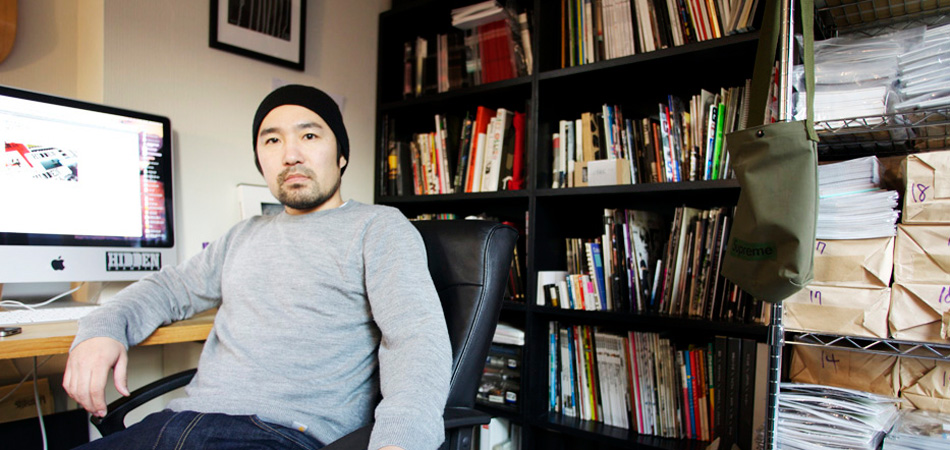
Interview with Hidenori Matsuoka
Creative Director of HIDDEN CHAMPION
www.hidden-champion.net
In a time when print publications were and still are shutting down in droves, what was your reasoning for starting a magazine?
I knew that starting a magazine was not easy to do, but at the same time, the idea of making a free magazine was born out of hard circumstances despite a lot of magazines closing down. A lot of magazines nowadays are caught up with the mainstream stuff rather than being original and their only interest is to boost their sales instead of focusing on the authenticity of the articles. In other words, the printed magazine world is saturated with the same shit as always, with slightly different content. The only distinction you can find is that they have different names.
Unfortunately, the act of stealing information from the Internet without doing actual research has spread all over the print world like an epidemic. Although there are many interesting events happening all over the, publishers only care about content that’s worth money. As a result, the gap between the mainstream and the underground has gotten huge, and I feel like it came to a point that was impossible to fix. We are losing opportunities to obtain new information unless you are on the scene. I grew up surrounded by music, art, skate, BMX, and the emergence of street culture. However, street culture is never featured in Japanese media, like it’s Japan’s black sheep. That’s when I thought I should start creating a magazine with the purpose of finding ‘hidden champions’. Also, I wanted to provide opportunities for young people to participate in the movement in the streets. I am fully aware that young people don’t really go to the bookstore anymore, so that’s why I decided to make HIDDEN CHAMPION available for free, rather than making another flop that gathers dust in the culture/art section.
Was it relatively easy to get started?
No, it was definitely not easy. I even thought that what I was doing might be pointless a couple of times, but I guess I was wrong. It was really surprising to see how people were interested in my concept of featuring hidden champions and giving little spotlights to those who represent various forms of the street culture. I was pretty stoked when I found out that a lot of brand marketing teams were with me in regards to the same exact stuff on every magazine you see being a noticeable trend. Looking back on the old times made me think that they were actually enjoying my struggle for creating something that contrasts the current printed magazine world.
Based on your relatively niche content, do you think that the Internet has to play a crucial part in the marketing and awareness of your magazine and what it represents?
The Internet became an essential part of my life. I use the Internet every single day and, often times get response about the magazine through email, the blog, or Twitter. About 90% of our readers are in Japan. But having said that, the Internet plays a huge role especially, to connect with the readers from all over the world. No matter where you live, you have the power to get to know about what we do as long as you have the Internet. Even though our magazine is only available in Japanese at this point, getting positive responses from outside of Japan gives me extra motivation to create something even more dope. When I started receiving email from the young, up-and-coming artists, saying that they wanted to be featured in the magazine, I realized that the Internet is a great tool to communicate and share the same interests, regardless of nationality.
The iPad and other digital tablets were slated to be a saving grace for print magazine, but initial numbers have not been up to par. What really is the future of magazines?
I don’t think those digital tablets can be an alternative to magazines. Perhaps it is more likely to penetrate and change the market once the usability of those digital devices is fixed. But at this point, those digital devices are just an additional platform for media formats like newspapers, magazines, television and radio.
Does your environmental footprint factor into the printing and paper you choose?
The problem with printed media is that as paper use grows, paper waste continues to rise as well. There is a bad cycle where publications are continuing to print less valuable information and still producing a bunch of waste, that doesn’t get read. I’m not denying the fact that a magazine is not exactly the most environmentally friendly, but every single copy of our magazine is in the hands of the readers, not in the trashcan.
What do magazines possess that their newer age digital media brethren can’t replicate?
Magazines have a physical form, unlike digital media. To me, it is the same thing as food you eat, art pieces you stare at, and the interior you sit on. You get to touch the magazines, smell the scent of the paper, and hear the “whoosh” when you flip the page. I believe that the mixture of those physical actions and the information blends in the brain to creating better recognition and stays longer as part of your memory. I actually wanted to try printing our magazine with various methods like silkscreen printing or handprinting. Choosing different kinds of paper is another option for the future as well. My desire to continuously experiment and try new things never stops. The beauty of printed magazines is that there is a beginning and an end and it can never be tainted once magazines are printed out because it is a finished product. Since temporary news can be presented well with the web format, I refuse to put that sort of information in the magazine. Besides, printing magazines obviously requires a larger budget than digital media. That’s why I carefully select the photos and personally make a dope layout that creates something memorable.
What strengths do digital platforms possess over analog ones such as magazines?
It’s fast. The speed of spreading information is incredibly fast in the digital world. Also, you can utilize searches and link up information easily. On the digital platforms, you can utilize movies and clips as your own personal entertainment and take it everywhere you go. Those digital platforms are superior to analog ones in terms of convenience because they can be a tool, which enables us to access all types of media format.
Do you feel there’s an air of respectability that magazines have over digital mediums?
I rarely buy magazines and I totally could survive without them. Almost all publications make magazines just to fill the empty pages with bullshit so that they don’t have to miss the deadline. I might sound critical towards other printed magazines, but I still have respect for a few magazines and some online magazines out there for making something creative and original.
Why do you think marketers still place a lot of respect and weight in print, despite online numbers being potentially stronger?
Despite the fact that we Japanese are still stuck with such an old custom, you have to understand that magazines are another form of the brand, in a sense that a good magazine has its own fans like a clothing label does. It could build up your status or be an honor to be on your favorite magazine. Today, digital media has been outnumbering magazines with the ability to change the world, but I feel that print is still better in terms of creating strong brand images and pursuing true originality. Regardless of scale, as long as you have the name and the contents to provide, you have your own brand. And you’ve got to put the quality of the content and the trust in your readers above everything else.
Text: So
Photography: Takashi Akiyama
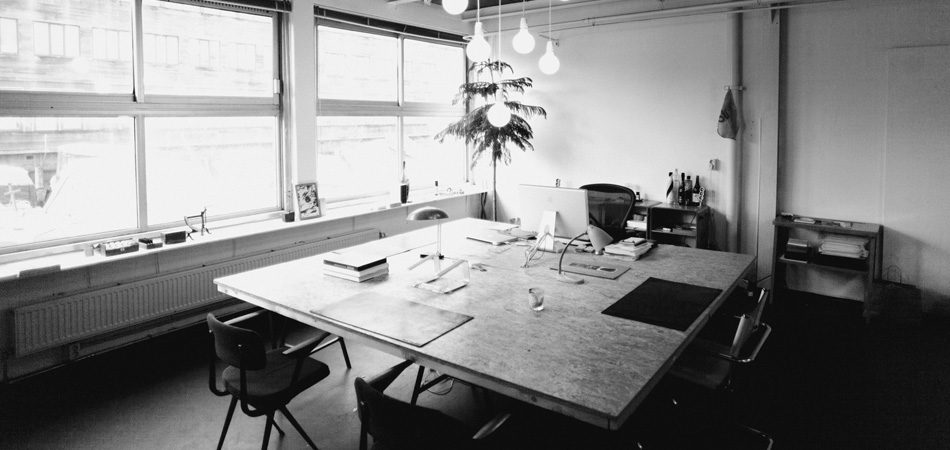
Interview with Menno van Meurs
Owner of Tenue de Nîmes
www.tenuedenimes.com
In a time when print publications were and still are shutting down in droves, what was your reasoning for starting a magazine?
Actually this is quite hilarious. When we started our Tenue de Nîmes store in 2008 we thought it would be unimaginative and wouldn’t be very exciting to just send out a press-announcement in which we would present ourselves. On top of which we met with such interesting people in the process of establishing the store we really felt like sharing our experiences too. That is how we decided to send out a very short message to the press in which we introduced ourselves briefly and enclosed a link to our first Journal de Nîmes. In the Journal we shared our backgrounds, our view on the denim business, its most influential designers and we introduced the readers to other people, concepts and brands that somehow inspired us to start our store. And there it was: an online magazine. So basically it is just a press release that went a bit out of hand (just like our denim fetish did I guess).
Was it relatively easy to get started?
I guess the fact we started off online made it a lot easier. We basically used online to get to print. After our first Nº0 magazine had gone over 60,000 online readers so we decided we should go for print as well. It was a natural process. The fact that we do everything in-house made it a lot easier too. I wrote most of the articles back then, Joachim did the design and a lot of the photography and Rene was sourcing new topics that we could feature. The only thing it cost us was loads of time and of course the printing. We really started on a shoestring. Passion and enthusiasm has always been our biggest motivation to get somewhere.
Based on your relatively niche content, do you think that the Internet has to play a crucial part in the marketing and awareness of your magazine and what it represents?
Well the beauty of the internet is that you are able to get in touch with like-minded folks from all over the world in a split second. Thanks to great network with online media players, like HYPEBEAST, we are able to spread our thoughts and beliefs very accurately. You simply reach extremely committed audiences that especially go to blogs and websites to get this kind of specific content. This is how niche content gets a perspective. My marketing background makes me very interested in these kinds of changes in media. We came from a strict push paradigm and right now stuff has turned around dramatically. People come to you for content, not the other way around. So as long as you know where your audience hangs out they will learn about you eventually.
The iPad and other digital tablets were slated to be a saving grace for print magazine, but initial numbers have not been up to par. What really is the future of magazines?
I believe the coffee table magazine can never be totally replaced by an iPad. There are some crucial aspects to print that a tablet will not be able to replace any time soon. First of all a lot of magazine aficionados want to collect the physical publications. Next to that people appreciate the touch of a magazine. The physical look and feel adds value to the reading experience. Then, as Marc Tumson, our Production Manager, said something really nice last week about the advantage off print, ‘You will never have to worry that it runs out of battery, you can easily fold it, put in in your bag, spill some coffee while reading, put in on a shelf to just look at it. It is pure romance!’ Therefore we believe that the strong magazines will always be able to survive the digital revolution as long as they embrace its digital possibilities. They can’t ignore the web you know. The problem is that online is an art in itself that loads of printed media producers don’t fully understand yet. Furthermore: I believe that digital media will consider to do print on the side to add some romance to their digital product.
Does your environmental footprint factor into the printing and paper you choose?
First of all we print on paper which is comparable with a newspaper. So obviously this is recycled paper. Secondly we would never print too many magazines. All our magazines will eventually reach its audience. Unlike a lot of printed media we have hardly any waste. So I’d like to believe that makes Journal de Nîmes environmentally friendly.
What strengths do digital platforms possess over analog ones such as magazines?
Any digital medium is able to reach a global audience in no time. It’s like comparing Planet Earth with the entire universe. But the trick remains to know your way out there.
Do you feel there’s an air of respectability that magazines have over digital mediums?
Well there is a sense of arrogance in print towards online media. I guess that originates from the fact that online also carries around so much terrible stuff. That is why digital media in general have sometimes a bad reputation. Next to that, the traditional Journalist seems to become a rarity. Everybody can start to write online and shares their beliefs. That makes proper online content a small percentage from all that’s out there. But I believe that in general online media should earn a lot more respect than they get right now.
Why do you think marketers and still place a lot of respect and weight in print despite online numbers being potentially stronger?
That is a very interesting question. Like I said unless printed media will start to participate online they will become beautiful corpses. You can’t survive on romance only. I believe that McLuhan said it right, ‘The Medium Is The Message. If the medium does not fit the period in time the message will not be picked up. Strong or not.’ But on the other hand I believe print will get more powerful again as well because people get simply tired of looking at their screens all day. So marketers should focus on media that either is very strong online or offline – or they should embrace the ones that take the best of both worlds.

